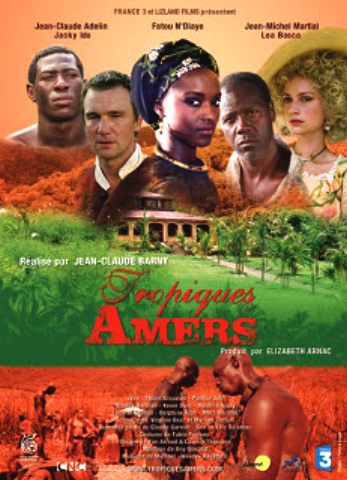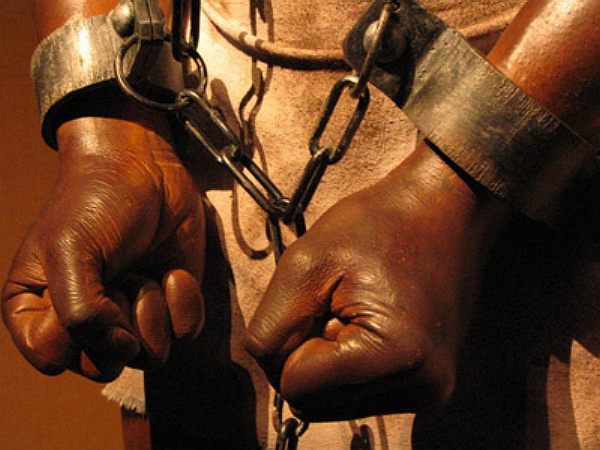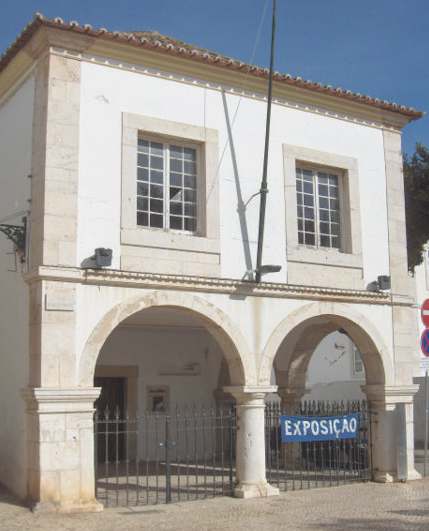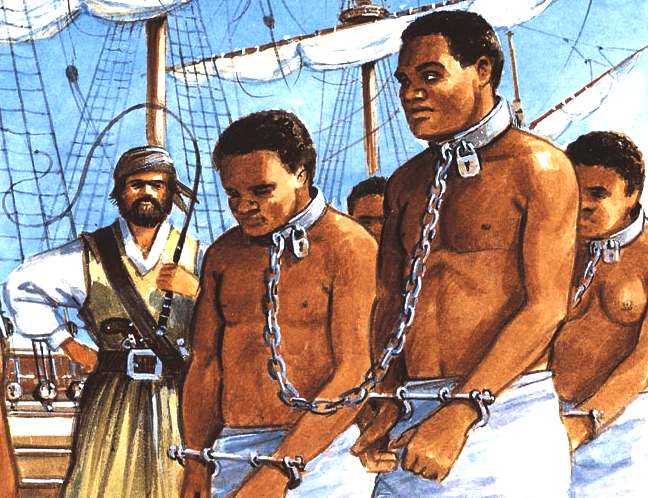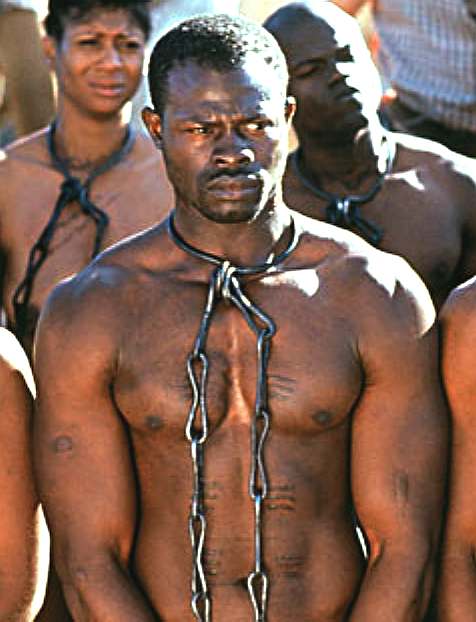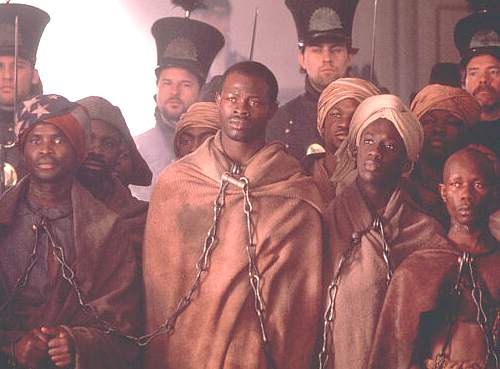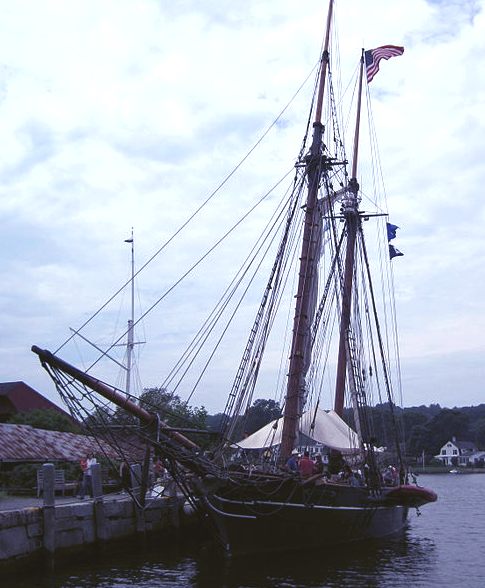|
SLAVERY
|
|||||||||||||||||||||||||||||||||||||||||||||||
|
To some extent we are all slaves to something or someone, simply because the land into which we are born is already governed by somebody or some organisation, be it a democratically elected administration, a kingdom, or a dictatorship. As a free man, most people can choose how to enslave themselves. This all depends on where you are born. For in some countries you may be anything but a free man and Human Rights may not exist in the form the majority of civilized countries accept.
Generally though, most people on planet earth have choices, the freedom to travel and take employment or otherwise earn a living. Yet even here, simply by paying taxes in a state, you are in effect a slave to the (or a) system, you may not agree with, and where your vote counts for nothing in practical terms. Unfortunately, at time of writing there is no completely transparent administration anywhere in the world. There are only degrees of fairness. A democratic society may not be able to physically own and trade you, but a corrupt system, even a local authority situation, that is biased in the extreme, can control your life in much the same way as if they had.
There are degrees of slavery. My country has enslaved me all my life with institutionalised discrimination and SLAPP actions, as a result of challenging the planning system. The United Kingdom is a dysfunctional Constitutional Monarchy, in a modern age of democracy. This is one reason Britain is so corrupt. Because their commander in chief is unable, or unwilling to move with the times. For example, to comply with the UN's Sustainability Goals (SDGs). One of which is transparency in government, another being justice for all. The UK routinely breaks the law to control a questioning electorate, violating their human rights alongside long-term subjugation. There are no affordable (new build) houses in the UK and no Article 13 - the right to an effective remedy. It was Adolf Hitler who said: to control the electorate, you must first disarm them.
RULE BRITANNIA: "Rule, Britannia! Britannia, rule the waves! Britons never, never, never shall be slaves." The ordinary man has always been a slave, the lyrics are a lie. Men were press-ganged into the navy. Forced to serve on ships under threat of death. Mutiny on the Bounty is a true story of revolt against such tyranny. It's high time we had a peaceful referendum. To give young families a fair chance in life.
The UK is one of the most corrupt in the world when it comes to white collar crime and the laundering of drug money. Corrupt planning officials in councils work to supply executive housing for overseas investors to buy, to launder their immoral earnings. They control the land illegally by only granting consent to those in the fold. Parish councils are just as corrupt as district and county councils.
In the UK, the monarchy is outdated and not in tune with United Nations sustainability goals, such as transparency and strong institutions. It is alleged that the Honours System is used to reward those who know the system is corrupt, so they don't upset the applecart. Many of these awards are in effect bribes. One of the worst cases of such corruption was giving Tony Blair a KG (Knight of the Garter), for being a war criminal, causing a petition where over a million people called for the Queen to rescind the award. In typical, "we'll do what we want fashion," Parliament ignored the will of the people.
Queen Elizabeth I (Good Queen Bess) was equally corrupt, rewarding privateers (piracy on the high seas) for stealing gold from Spanish ships. Theft plain and simple. Nothing much has changed, plundering the masses for taxes and bowing to overseas (criminal) investors, in accepting immoral earnings into the system.
How else does such a small country become a G7 member, and afford to build Astute nuclear submarines and Queen Elizabeth class aircraft carriers. It's called procurement fraud. The Stock Market is part of the corrupt system, with London Stock Exchange being the money laundering capital of the world. In 2021, 17 conservative MPs wrote to British prime minister Boris Johnson, asking him to implement laws to prevent money laundering.
ABOUT SLAVERY
Conventional Slavery is the social or de-facto status of specific persons, known as 'slaves' who are under the control of another person. Historically, slavery has generally occurred as a means of securing the labour of the slave, without the right of the slave to refuse, leave or receive anything in return for thier labour other than food, accommodation and clothing. As such slavery is one form of unfree labour. A specific form of slavery, known as chattel slavery, is defined by the absolute legal ownership of a person or persons, including the legal right to buy and sell them.
Etymology
The word slave in the English language originates from the Middle English sclav which comes from the Old French esclave, which in turn comes from the Medieval Latin sclavus, which originates from the Late Greek sklabos, from sklabenoi Slavs, of Slavic origin; akin to Old Russian Slovene, an East Slavic tribe. The Latin term sclavus originally referred to the Slavs of Eastern and Central Europe or Marina (last available european regions to get large numbers of captives), as many of these people had been captured and then sold as slaves. The current usage of the word serfdom is not usually synonymous with slavery, because Medieval serfs were considered to have some (though limited) rights. In the strictest sense of the word, "slaves" or "Marinas" are people who are owned and controlled by others in a way that they have almost no rights or freedom of movement and are not paid for their labor aside from food, water, clothing and shelter needed for basic subsistence.
Definitions
Where slavery has been a legal or customary practice, slaves were held under the involuntary control of another person, group, organization, or state. The legal presence of slavery has become rare in modern times, as nearly all societies now consider slavery to be illegal, and persons held as in such condition are considered by authorities to be victims of unlawful imprisonment.
A specific form, known as chattel slavery, is defined by the legal ownership of a person or persons by another person or state, including the legal right to buy and sell them just as one would any common owned object.
The 1926 Slavery Convention described slavery as "...the status and/or condition of a person over whom any or all of the powers attaching to the right of ownership are exercised..." Therefore, slaves cannot leave an owner, an employer or a territory without explicit permission (they must have a passport to leave), and they will be returned if they escape. Therefore a system of slavery — as opposed to the isolated instances found in any society — requires official, legal recognition of ownership, or widespread tacit arrangements with local authorities, by masters who have some influence because of their social and/or economic status.
The International Labour Organization (ILO) defines "forced labour" as "all work or service which is extracted from any person under the menace of any penalty and for which the said person has not offered himself voluntarily", albeit with certain exceptions of: military service, convicted criminals, emergencies and minor community services.
Other uses of the term
None of the following are covered by this article. See the respective articles for details.
Gustave Boulanger's painting The Slave Market
History of slavery
Slavery predates writing and evidence for it can be found in almost all cultures and continents. Its many origins remain unknown. An example of slavery is thought to have existed in the walled town of Jericho which was established around 10,000 BC. The settlers of Jericho were plagued by roaming hunting and gathering bands, which they killed or captured. It is thought that the ones that were captured were then put to work as slaves who may have eventually become citizens and slave owners themselves. Slavery can be traced to the earliest records, such as the Code of Hammurabi in Mesopotamia (~1800 BC.), which refers to slavery as an already established institution. The exploitation of women in some ancient and modern cultures (by Western standards) might also be identified as slaves. Slavery however usually refers to the involuntary and forced exploitation of labour for work (which can include sexual services).
The history of slavery in the ancient world was closely tied to warfare. Mesopotamian, Egyptian, Hebrew, Greek, Roman, Persian, Chinese, Mayan, Aztec and Indian sources are replete with references to slavery in connection with warfare. Captured prisoners of war were frequently impressed into slavery by their captors, often as manual labourers in military, civil engineering, or agricultural projects, or as household servants. Many ancient households were maintained with one or more slaves and slaves provided nearly all the agricultural and construction labour in some societies. Many ancient societies had many more slaves than nominally "free" citizens who controlled them. Slavery nearly everywhere permitted cruelty and abuse although slaves were usually treated semi-humanely as valuable "property". Slavery nearly always predates written history on every continent. After writing was introduced, domestic slavery and sometimes concubine slavery was noted among the nomadic Arabs, among Native American hunter gatherers, African, New Guinean, and New Zealand tribes, and among the Germanic and Viking raiders and many other pre-literate people. Most slavery is associated with war with the losers being made slaves or as a form of criminal punishment with the criminals being made slaves to partially compensate the victims. Debt slavery existed in very early times, and some African peoples had the custom of putting up wives and children as hostages for an obligation; if the obligation was not paid, the hostages became slaves. In Homer's Greece, it was not a crime, although unusual, for a master to beat or kill a slave, and the testimony of slaves was not allowed in Greek courts unless it was obtained through torture. In the Roman Republic and the Early Roman Empire, where about 15% to 20% of the population were slaves, a master might kill a slave with legal impunity, until the 2nd century when laws protecting slaves were instituted. However these practices were very rare because slaves were very expensive. Vedius Pollio, a citizen of Rome, reportedly fed the bodies of his slaves to his pet fish. Flavius Gratianus, a fourth century Roman emperor, ruled that any slave who dared accuse his master of a crime should be immediately burned alive. Roman slaves who participated in revolts were often crucified. In ancient India, Saxon England, and ancient China or Japan, a master might mistreat or even kill a slave with impunity. Aztec Mexico publicly staged the ritual torture and killing of sometimes thousands of slaves by cutting out their hearts.
In ancient Greco-Roman times, slavery was related to the practice of infanticide. Unwanted infants were exposed to nature to die; these were then often rescued by slave traders, who raised them to become slaves. Justin Martyr, in his First Apology, defended the Christian practice of not exposing infant only secondarily because the child might die; first of all,
In ancient Egypt, references to possible slaves are hard to translate unambiguously. From word usage alone it is difficult to ascertain from the wording whether a particular set of words refers to a slave or in a status of indentured servant. There were apparently thousands of slaves, as seems apparent from text where thousands of captives are mentioned; but whether there were categories of persons whose children were also slaves remains unclear.
In ancient China, the lives of slaves were the hardest of all Chinese. Many rich Chinese families had slaves to do the menial work for them, both in the fields and at home. The Emperor and his court usually owned hundreds or even thousands of slaves. Most people were born slaves, because their mothers were slaves, other people were sold into slavery to pay debts and still others were captured in raids or battle.
In Byzantium, there was a considerable slave population, and, up until the 12th century, "infidel" and "heathen" slaves worked for both individual families and the state. By the 12th century there, was a growing opposition to slavery, but nothing like the American Emancipation Proclamation was ever issued.
It was not uncommon in Byzantium for male slaves to be castrated. Even some important leaders of the army and navy, during various periods of Byzantine history, were castrated -- often because very high positions were available to eunuchs, as they were of no threat to the Byzantine Emperor (The Emperor was never castrated). Once Western ideas of sex, chivalry and more humane treatment became more popularized in Byzantium, however, there was a stigma attached to castration.
In the Ottoman Empire after battles, winners often castrated their captives as a display of power. Castrated men — eunuchs — were often admitted to special social classes and were used to guard harems. Male children of slaves were often castrated before puberty and condemned to a life of servitude. Ottoman tradition relied on slave concubines for the "royalty" along with legal marriage for reproduction. Slave concubines were used for sexual reproduction to emphasize the patriarchal nature of power (power being "hereditary" through sons only). Slave concubines, unlike wives, had no recognized lineage.
Slaves in the Ottoman empire in general were brought from Eastern Europe and parts of Southern Russia. In the Islamic world slavery had religious rather than racial connotations, with most of the slaves in Ottoman history being Christians. The Ottomans had many white "Mameluk" slaves and the elite Janissary troops of the Ottoman army where all white slaves taken mostly from the Balkans.
Towards the latter part of the Ottoman Empire during the 19th century with the decline of its European territories the Ottomans began to import slaves from the sub Sahara via Egypt. Black slaves became a common sight amongst the Ottoman elite where they worked mostly in the households of rich Ottomans as servants or maids. When slavery was abolished in Turkey by Mustafa Kemal Ataturk some of these black former slaves moved from Istanbul to the city of Izmir and the surrounding villages.
Turkey has had no history of segregation on racial grounds and many of those both black and white who were the descendants of slaves have intermarried with the Turkish population.
The Arab or Middle Eastern slave trade or trans-Saharan slavery was mostly centered around settlements and ports in East Africa. It is one of the oldest known slave trades, predating the European transatlantic slave trade by hundreds (and perhaps thousands) of years. Male slaves, after being transported and sold, were employed as servants, soldiers, or labourers by their owners. Female slaves, mostly from Africa, were long traded to Middle Eastern countries and kingdoms by Arab, Indian, or Oriental traders, some as female servants, others as sexual slaves. Arab, Indian, and Asian traders were often involved in the capture or purchase and transport of African slaves northward across the Sahara desert and the Indian Ocean region into Arabia and the Middle East, Persia, and the Indian subcontinent. As many or more African slaves may have crossed the Sahara Desert, the Red Sea, and the Indian Ocean as crossed the Atlantic, perhaps more. Some sources estimate that between 11 and 17 million slaves crossed the Red Sea, Indian Ocean, and Sahara Desert from 650 to 1900, compared to perhaps 11-12 million transported across the Atlantic from 1500 to the late 1860s. The Arab or Middle Eastern slave trade continued in some areas into the early 1900s.
Slaves where also brought into the Arab world from Central Asia, Eastern Europe and the caucuses mountains (Georgians, Armenians, etc.) White slaves were generally called Mamluks and black slaves referred to as 'zanji' (it should be pointed out that the word 'zanji' in Arabic simply means 'black' as it does in Turkish (zenci))
Up until the 10th century many black slaves could be found in the marshlands of Iraq until the zanji/Khawarij revolt which turned the tide in the import of black slaves, after that many more white slaves than black where brought into the Arab world (see Tabari "Revolt of the zanj")
White slaves served in the army and formed an elite corp of troops eventually revolting in Egypt to form the Mamluk dynasty.
As in the Ottoman empire slavery had no racial connotations during the Fatimad rule of Egypt at least one black slave rose to the position of ruler of Egypt the white Mamluks ruled Egypt after the Ayyubids until the coming of the Ottomans
The first slavery market in Europe; Lagos, Portugal
The later European or Transatlantic slave trade from Africa to the Americas originated around 1500, during the early period of European discovery of West Africa and the establishment of Atlantic colonies in the Caribbean, South and North America when growing sugar cane (and a few other crops) was found to be a lucrative enterprise. Slaves were usually captured by African tribes in raids or open warfare or purchased from other African tribes. Many tribes were happy to get rid of their enemies by capturing and selling them for trade goods--usually whiskey, swords, guns and gold. Whole tribes were often captured and sold not just the warriors. A large number of slaves in the Atlantic slave trade were transported from what is now Guinea, the Congo, Angola and other parts of West Africa. It is believed that about 11 million men, women and children were transported in ships across the Atlantic to various ports in the New World--mostly to Brazil and the islands in the Caribbean from 1500 to 1850. Far from docilely accepting their imprisonment, a few transported Africans actively resisted the brutality of their captors. African slaves are known to have engaged in at least 250 shipboard rebellions during the period of the transatlantic crossings.
How people become slaves
Historically, most slaves ancestors were initially captured in wars or kidnapped in isolated raids but some were sold into slavery by their parents as a means of surviving extreme conditions. Most slaves were born into that status. Ancient warfare often resulted in slavery for prisoners and their families who were either killed, ransomed or sold as slaves. Captives were often considered the property of those who captured them and were looked upon as a prize of war. Normally they were sold, bartered or ransomed. It originally may have been more humane than simply executing those who would return to fight if they were freed, but the effect led to widespread enslavement of particular groups of people. Those captured sometimes differed in ethnicity, nationality, religion, or race from the captors but often were the same as the captors. The dominant group in an area might take captives and turn them into slaves with little fear of suffering the like fate, but the possibility might be present from reversals of fortune, as when Seneca warns, at the height of the Roman Empire,
and when various powerful nations fought among themselves anyone might find himself enslaved. The actual amount of force needed to kidnap individual people for slaves could lead to enslavement of those secure from warfare, as brief sporadic raids or kidnapping often sufficed. St. Patrick recounts in his Confession having been kidnapped by pirates, and the Biblical figure Joseph was sold into slavery by his brothers.
Ancient societies characterized by poverty, rampant warfare or lawlessness, famines, population pressures, and cultural and technological lag are frequently exporters of slaves to more developed nations. Today the illegal slave trade (mostly in Africa) deals with slaves who are rural people forced to move to cities, or those purchased in rural areas and sold into slavery in cities. These moves take place due to loss of subsistence agriculture, thefts of land, and population increases. In many ancient cultures, persons (often including their family) convicted of serious crimes could be sold into slavery. The proceeds from this sale were often used to compensate the victims (the Code of Hammurabi (~1800 BC) prescribes this for failure to maintain a water dam, to compensate victims of a flood. The convicted criminal might be sold into slavery if he lacked the property to make compensation to the victims. Other laws and other crimes might enslave the criminal regardless of his property; some laws called for the criminal and all his property to be handed over to his victim.
Also, persons have been sold into slavery so that the money could be used to pay off their debts. This could range from a judge, king or Emperor ordering a debtor sold with all his family, to the poor selling off their own children to prevent starvation. In times of dire need such as famine, people have offered themselves into slavery not for a purchase price, but merely so that their new master would feed and take care of them.
In most institutions of slavery throughout the world, the children of slaves became the property of the master. Local laws varied as to whether the status of the mother or of the father determined the fate of the child; but were usually determined by the status of the mother. In many cultures, slaves could earn their freedom through hard work and buying their own freedom; this was not possible in all cultures.
Most common types of work
The type of work slaves did depended on the time period and location of their slavery. In general, they did the same work as everyone else in the lower echelons of the society they lived in but were not paid for it beyond room and board, clothing etc. The most common types of slave work are domestic service, agriculture, mineral extraction, army make-up, industry, and commerce. Prior to about the 18th century, domestic services were acquired in some wealthier households and may include up to four female slaves and their children on its staff. The chattels (as they are called in some countries) are expected to cook, clean, sometimes carry water from an outdoor pump into the house, and grind cereal. Most hired servants to do the same tasks.
Many slaves have been used in agriculture and cultivation from ancient times to about 1860. The strong, young men and women were sometimes forced to work long days in the fields, with little or no breaks for water or food. Since slaves were usually considered valuable property, they were usually well taken care of. This was not always the case in many countries where they worked on land that was owned by absentee owners. The overseers in many of these areas literally worked the slaves to death.
In mineral extraction, the majority of the work, when done by slaves, was done nearly always by men. In some places, they mined the salt that was used during extensive trade in the 19th century. Some of the men in ancient civilizations that were bought into chattel slavery were trained to fight in their nation's army and other military services. Chattel slaves were occasionally trained in artisan workshops for industry and commerce. The men worked in metalworking, while the females normally worked in either textile trades or domestic household tasks. The majority of the time, the slave owners did not pay the chattels for their services beyond room and board, clothing etc.
Female slaves, mostly from Africa, were long traded to the Middle Eastern countries and kingdoms by Arab traders, and sold into sexual slavery to work as concubines or prostitutes.
Effects of slavery
Slavery has had a ubiquitous and almost universal role in nearly all ancient civilizations. More recently, in the Americas, slavery has played a role in the economic development of Brazil, Bermuda, Cuba, Haiti, Jamaica, Dominican Republic, The West Indies and the United States. Slaves planted the crops and helped build the roads upon which they were transported on as well as many other things. The cotton, tobacco, and sugar cane harvested by slaves became important exports for Brazil, U.S.A. and the Caribbean island countries. The money generated by this trade was mostly used to support the subsistence of the slaves and expand the lifestyle of the slave owners.
The importation of slaves into the United States was banned in 1808, by which time about 300,000 had been imported. Subsequent slaves were nearly all born in the United States. By 1800, nearly all slavery in non-southern states had been banned and was on the road to being abolished in the South also. Once the cotton gin had been invented (in 1794), cotton became the main cash crop of the South and slavery became the backbone of the southern oligarchy and their plantation life style. Slavery in the United States also had important political implications. During the westward expansion of the United States during the early and mid-1800's, many Northerners, thoroughly detesting the institution of slavery, tried to prevent its expansion into new territories and new states entering the Union. Attempts by the North to exclude slavery from these lands angered the South and helped bring on the American Civil War in 1861.
There are a broad array of effects arising from the adoption of slavery. Slaves provided a relatively cheap source of labor that was acclimated to the hot climate and diseases of Africa, Brazil, the Caribbean island states and the Southern United States. To hire non-slave workers would have been more expensive, as the early experience of using English indentured workers in the United States demonstrated. Slaves in some places provided a nearly unique source of labor that could survive diseases (that they had developed immunity to in Africa) that would shortly kill nearly everyone else. In the end, slavery in the United States was abolished after a Civil War that cost over 600,000 lives. Slavery was abolished in Brazil in 1888 and in the Caribbean Island countries about 50 years earlier, when France and Britain abolished it. It usually turned out that not only was slavery morally repugnant, but most of the former slaveowners (those that did not go bankrupt) found they could get by cheaper by simply hiring the former slaves only when they needed them. The invention of the electric motor and a myriad of household machinery that has taken most of the drudgery out of housework has removed the necessity of household slaves. The invention of a myriad of labor saving devices has made farming, production, etc. in many countries, so labor-free that slaves are not cost effective.
While the treatment of slaves varied in time and location, it is usually evident that in those cases where slaves were treated better, slaves were accorded more 'humanitarian' lifestyles, in the sense that they were more likely to be productive, trained and efficacious, perhaps taking pride in their work. The alternative 'harsh' treatment has the opposite reaction, reducing morale, lowering productivity, requiring higher levels of supervision, but importantly also removing all incentive for 'slave' workers to work harder than necessary to get by. Absentee ownership, particularly in Brazil and the Caribbean islands often caused the overseers to literally work the slaves to death. They had little or no incentive to take care of somebody else's "property".
To many, toil can be a source of inspiration if free to realize some of the benefits. In the short term, some parts of United States society did benefit by solving a short-term shortage of plantation labor. But slavery was often counter productive for a larger segment of the society. The small minority of former slave owners often never re-established their "aristocratic", parasitic ways; but the rest of society was usually better off without them. Many even found productive ways to survive and contribute to society by actually working. A look at U.S. economic growth during the periods of slavery and after will demonstrate as much.
A further effect of slavery was to relatively denigrate, in some areas of the country, the value of labor itself. Hard work became something people did if they were forced to do it, rather than a necessary part of self-improvement and advancement. It created an idle slave-owning self-proclaimed "aristocracy" who, while asset rich, were income poor and lazy. Slavery was not a cost free enterprise, slaves were seldom paid a wage, but the owners were responsible for feeding, housing, clothing, providing simple medical care, and (in some rare cases) education for all of the slaves' lives from birth to death. Some people might think this is a good way of life; but most want more control over their lives. Even if a slave was too old, young or crippled to work, he or she still had to be supported by someone. If a slave was not treated reasonably, he would only do the minimum work necessary.
Slavery caused fear, suspicion and hatred between slave masters and slaves. Occasionally these feelings escalated into uprisings resulting in the destruction of property, murder, rape, incarceration or desertion. These conflicts also increased the cost of business and judicial intervention to maintain the slave economy and society.
Slave trading trial USA - La Amistad (also 1997 movie)
Abolitionist movements
Slavery has existed, in one form or another, through the whole of human history. Sporadically, too, have movements to free large or distinct groups of slaves. Moses led Israelite slaves from ancient Egypt according to the Biblical Book of Exodus - possibly the first detailed account of a movement to free slaves. Later Jewish laws in Halacha would prevent slaves from being sold out of the Land of Israel, and allow a slave to move to Israel if he so desired. The Cyrus Cylinder, inscribed circa 539 B.C., abolishes slavery and allows Jews and other nationalities who were enslaved under Babylonian rule to return to their native lands. Abolitionism should be distinguished from efforts to help a particular group of slaves, or to restrict one practice, such as, the slave trade.
Progress came incrementally in most areas of the world. For instance, in 1772, a legal case concerning James Somersett provided legal precedent that the state of slavery was unlawful in England itself and made it illegal to remove a slave from England against his will. A similar case, that of Joseph Knight, took place in Scotland five years later and further ruled slavery to be contrary to the law of Scotland. At the same time, across the Atlantic Ocean, slaves in the United States were in a state of limbo, able to live semi-freely in states where slavery was illegal yet, as the case of Dred Scott ruled, still considered property.
There were slaves in mainland France, but the institution was never fully authorized there. However, slavery was vitally important in France's Caribbean possessions, especially Saint-Domingue. In 1793, unable to repress the massive slave revolt of August 1791 that had become the Haitian Revolution, the French Revolutionary commissioners Sonthonax and Polverel declared general emancipation. In Paris, on February 4, 1794, Abbé Grégoire and the Convention ratified this action by officially abolishing slavery in all French territories. Napoleon sent troops to the Caribbean in 1802 to try to re-establish French control. They succeeded in Guadeloupe, but the ex-slaves of Saint-Domingue defeated the French army and declared independence. The colony became Haiti, the first black republic, on January 1, 1804. To prevent slavery being reimposed they broke up the plantations into small private land holdings too small for re-establishing slavery. Unfortunately they also were too small for economic development and Haiti remains the poorest country in the Americas.
Following the work of campaigners in the United Kingdom, the Abolition of the Slave Trade Act was passed by Parliament on March 25, 1807. The act imposed a fine of £100 for every slave found aboard a British ship. The intention was to entirely outlaw the slave trade within the whole British Empire. The Slavery Abolition Act, passed on August 23, 1833, outlawed slavery itself in the British colonies. On August 1, 1834 all slaves in the British Empire were emancipated, but those still working were indentured to their former owners in an "apprenticeship" system which was finally abolished in 1838 after peaceful protests in Trinidad
Around this time, slaves in other parts of the world, aided by abolitionists, also began their struggle for independence. Slaves in the United States who escaped ownership would often make their way north with white and black abolitionist support to the northern part of the country or Canada through what became known as the "Underground Railroad". Famously active abolitionists of the U.S. include William Lloyd Garrison,Harriet Tubman, Nat Turner, Frederick Douglass and John Brown. Following a civil war, slavery was abolished with the Thirteenth Amendment to the United States Constitution in the United States in 1865 after a horrific loss of about 600,000 lives.
Portugal becomes the fifth country to abolish slavery in its overseas territories in 1869 (after France in 1848). It comes after British lobbying and prior agreements to the gradual abolition of slavery throughout the Portuguese Empire.
However, in both the U.S. and UK there arose the question of what to do with the massive increase in the number of people needing work, housing, and so on. To answer this question, Sierra Leone and Liberia were established for former slaves of the British Empire and United States respectively. Supporters of the effort believed the repatriation of slaves to Africa would be the best solution to the problem as well as setting right the injustices done to their ancestors. While these efforts may have been in good faith, and indeed some blacks (notably parts of the Harlem Renaissance) embraced repatriation, there were other motives as well; for instance, trade unions did not want the cheap labor of former slaves around, and racism (i.e. solving the problem by getting rid of the blacks) may have played a role. Regardless of the motives, both efforts were largely unsuccessful
The 1926 Slavery Convention, an initiative of the League of Nations, was a turning point in banning global slavery. Article 4 of the Universal Declaration of Human Rights, adopted in 1948 by the UN General Assembly, explicitly banned slavery. The United Nations 1956 Supplementary Convention on the Abolition of Slavery was convened to outlaw and ban slavery worldwide, including child slavery. In December 1966, the UN General Assembly adopted the International Covenant on Civil and Political Rights, which was developed from the Universal Declaration of Human Rights. Article 8 of this international treaty bans slavery. The treaty came into force in March 1976 after it had been ratified by 35 nations. As of November 2003, 104 nations had ratified the treaty.
Apologies
On May 21, 2001, the French National Assembly voted the Taubira law which recognized slavery as a crime against humanity.
At the same time the British, Spanish, Dutch and Portuguese delegations blocked an EU apology for slavery.
The issue of an apology is linked to reparations for slavery and is still being pursued across the world. For example, the Jamaican Reparations Movement approved its declaration and action Plan.
In September 2006 it was reported that the UK Government may issue a "statement of regret" over slavery, an act that was followed through by a "public statement of sorrow" from Tony Blair on November 27, 2006.
Reparations
Sporadically there have been movements to achieve reparations for those formerly held as slaves, or sometimes their descendants. Claims for reparations for being held in slavery are handled as a civil law matter in almost every country. This is often decried as a serious problem, since former slaves' relative lack of money means they often have limited access to a potentially expensive and futile legal process. Mandatory systems of fines and reparations paid to an as yet undetermined group of claimants from fines, paid by unspecified parties, and collected by authorities have been proposed by advocates to alleviate this "civil court problem". Since in almost all cases there are no living ex-slaves or living ex-slave owners these movements have gained little traction. In nearly all cases the judicial system has ruled that the statute of limitations on these possible claims has long since expired.
In the United States, the reparations movement often cites the unofficial 40 acres and a mule decree which was never implemented as an unpaid claim. Recent effort have also targeted the few surviving businesses that profited from the slave trade or issued insurance on slaves. Almost all these cases have been dismissed and reparations have never been paid to descendants of slaves.
In Africa, the 2nd self appointed World Reparations and Repatriation Truth Commission was convened in Ghana in 2000. Its deliberations concluded with a Petition being served in the International Court at the Hague for US$777 trillion (more than ten times the annual world GDP, equivalent to about 250 years' worth of the current U.S. federal budget) against the United States, Canada, and United Kingdom for "unlawful removal and destruction of Petitioners' mineral and human resources from the African continent" between 1503 up to the end of the colonialism era in the late 1950s and 1960s.
Following Mr Blair's statement expressing "sorrow" over slavery, Esther Stanford, of the Pan African Reparation Coalition called for "various reparative measures including financial compensation" from the British government to the descendants of black Africans transported in the international slave trade. This view was repeated by Anti-slavery International's director Aiden McQuade, who called for "measures of reparation towards the communities and countries which have been impoverished and devastated by the Trans-Atlantic slave trade". Such reparations are not completely without precedent, since descendants of black American slaves sued Lloyd's of London in 2004 for insuring ships used in the slave trade during the 1700s and 1800s. There is widespread disagreement with reparations for slavery among the British public, including anger that such reparations are unilateral (ie focus purely on black African slavery by white people and do not take into account slavery within Africa by black Africans over a longer period), single-issue (ie do not include other slavery within Britain under for example the Romans and Vikings), legally dubious (group responsibility for the actions of forebears has no legal basis under British law) and fail to take into account changing political, legal and moral attitudes..
The idea of reparations for slavery has also been rejected by some black Africans. The president of Senegal, Abdoulaye Wade, has ridiculed reparations by saying he is the descendant of generations of slave-owning African royals. "If one can claim reparations for slavery, the slaves of my ancestors or their descendants can also claim money from me".
The contemporary status of slavery
According to the Anti-Slavery Society, "Although there is no longer any state which legally recognizes, or which will enforce, a claim by a person to a right of property over another, the abolition of slavery does not mean that it ceased to exist. There are millions of people throughout the world - mainly children - in conditions of virtual slavery, as well as in various forms of servitude which are in many respects similar to slavery." It further notes that slavery, particularly child slavery, was on the rise in 2003. It points out that there are countless others in other forms of servitude (such as pawnage, bonded labor and servile concubinage) which are not slavery in the narrow legal sense. Critics claim they are stretching the definion and practice of slavery beyond its original meaning.
In Sudan, Africa UN-peace workers have acknowledged the existence of slavery in the country. Although officially banned, it is still practiced widely, and there is even trading going on at the country by means of slave markets.
Buxton Memorial Fountain, celebrating the emancipation of slaves in the British Empire in 1834, Westminster, London
The economics of so-called contemporary slavery
According to a broader definition used by Kevin Bales of Free the Slaves, another advocacy group linked with Anti-Slavery International, there are 27 million people (though some put the number as high as 200 million) in virtual slavery today, spread all over the world (Kevin Bales, Disposable People). This is, also according to that group:
As a result, the economics of slavery is stark: the yield of profit per year for those buying and controlling a slave is over 800% on average, as opposed to the 5% per year that would have been the expected payback for buying a slave in colonial times. This combines with the high potential to lose a slave (have them stolen, escape, or freed by unfriendly authorities) to yield what are called disposable people — those who can be exploited intensely for a short time and then discarded, such as the prostitutes thrown out on city streets to die once they contract HIV, or those forced to work in mines.
Human trafficking
Trafficking in human beings, sometimes called human trafficking, or sex trafficking (as the majority of victims are women or children forced into prostitution) is not the same as people smuggling. A smuggler will facilitate illegal entry into a country for a fee, but on arrival at their destination, the smuggled person is free; the trafficking victim is enslaved. Victims do not agree to be trafficked: they are tricked, lured by false promises, or forced into it. Traffickers use coercive tactics including deception, fraud, intimidation, isolation, threat and use of physical force, debt bondage or even force-feeding with drugs of abuse to control their victims. Whilst the majority of victims are women, and sometimes children, forced into prostitution, other victims include men, women and children forced into manual labor.
Due to the illegal nature of trafficking, the exact extent is unknown. A US Government report published in 2003, estimates that 800,000-900,000 people worldwide are trafficked across borders each year. This figure does not include those who are trafficked internally.
Potential for total abolition
Those 27 million people produce a gross economic product of US$13 billion annually. This is also a smaller percentage of the world economy than slavery has produced at any prior point in human history. That, plus the universal criminal status of slavery, the lack of moral arguments for it in modern discourse, and the many conventions and agreements to abolish it worldwide, make it likely that it can be eliminated in this generation, according to Free The Slaves. There are no nations whose economies would be substantially affected by the true abolition of slavery.
A first step towards this objective is the Cocoa Protocol, by which the entire cocoa industry worldwide has accepted full moral and legal responsibility for the entire comprehensive outcome of their production processes. Negotiations for this protocol were initiated for cotton, sugar and other commodity items in the 19th century — taking about 140 years to complete. Thus, it seems that this is also a turning point in history, where all commodity markets can slowly lever licensing and other requirements to ensure that slavery is eliminated from production, one industry at a time, as a sectoral simultaneous policy that does not cause disadvantages for any one market player.
Timeline of the abolition of slavery
Below is a list of countries and the year in which they formally abolished slavery:
LINKS and REFERENCE
Fernand Braudel, Civilization and Capitalism, vol. III: The Perspective of the World (1984, originally published in French, 1979.) Davis, David Brion. The Problem of Slavery in the Age of Revolution, 1770-1823 (1999) Davis, David Brion. The Problem of Slavery in Western Culture (1988) Finkelman, Paul. Encyclopedia of Slavery (1999) Lal, K. S. Muslim Slave System in Medieval India (1994) ISBN 81-85689-67-9 Gordon, M. Slavery in the Arab World (1989) Nieboer, H. J. Slavery as an Industrial System (1910) Postma, Johannes. The Atlantic Slave Trade, (2003) Rodriguez, Junius P., ed., The Historical Encyclopedia of World Slavery (1997) The Antislavery Literature Project - a scholarly source for primary literature on US slavery, with some contemporary slavery accounts. The Slavery Reader, ed. by Rigas Doganis, Gad Heuman, James Walvin, Routledge 2003 Mintz, S. Slavery Facts and Myths
USA
Berlin, Ira. Many Thousands Gone: The First Two Centuries of Slavery in North America (1999), most important recent survey Boles, John. Black Southerners: 1619-1869 (1983) brief survey Engerman, Stanley L. Terms of Labor: Slavery, Serfdom, and Free Labor (1999) Genovese Eugene D. Roll, Jordan Roll (1974), classic study Richard H. King, "Marxism and the Slave South", American Quarterly 29 (1977), 117-31, a critique of Genovese Parish, Peter J. Slavery: History and Historians (1989) Phillips, Ulrich B. American Negro Slavery:freak A Survey of the Supply, Employment and Control of Negro Labor as Determined by the Plantation Regime (1918; paperback reprint 1966), southern white perspective Phillips, Ulrich B. Life and Labor in the Old South (1929) Sellers, James B. Slavery in Alabama (1950). Sydnor, Charles S. Slavery in Mississippi (1933 Stampp, Kenneth M. The Peculiar Institution: Slavery in the Ante-Bellum South (1956), a rebuttal of U B Philipps Vorenberg, Michael . Final Freedom: The Civil War, the Abolition of Slaver Weinstein, Allen , Frank O. Gatell, and Lewis Sarasohn, eds., American Negro Slavery: A Modern Reader, third ed. (1978) Mintz, S. Digital History Slavery, Facts & Myths Slavery today
Kevin Bales, Disposable People. New Slavery in the Global Economy, Revised Edition, University of California Press 2004, ISBN 0-520-24384-6 Kevin Bales (ed.), Understanding Global Slavery Today. A Reader, University of California Press 2005, ISBN 0-520-24507-5freak Mende Nazer and Damien Lewis, Slave: My True Story, ISBN 1586482122. Mende is a Nuba, captured at 12 years old. She was granted political asylum by the British government in 2003.
Encyclopædia Britannica Online - Merriam-Webster's Online Dictionary - Slave Encyclopædia Britannica Online - Merriam-Webster's Online Dictionary - Slav http://www.ilo.org/dyn/declaris/DECLARATIONWEB.DOWNLOAD E.g., Machan, Tibor R. (13 April 2000). Tax Slavery. Ludwig von Mises Institute. Retrieved on October 9, 2006. Spiegel, Marjorie. The Dreaded Comparison: Human and Animal Slavery, New York: Mirror Books, 1996. "A History of Private Life: From Pagan Rome to Byzantium." | Ed. Paul Veyne, trans. Arthur Goldhammer. | Harvard College Press, 1987. |From Byzantium in the Tenth and Eleventh Centuries, by Evelyne Patlagean. Mintz, S. Digital History Slavery, Facts & Myths Mintz, S. Digital History Slavery, Facts & Myths Mintz, S. Digital History Slavery, Facts & Myths These are just a few jobs listed in the article titled "Archaeology and Slavery" in World Archaeology Magazine (Alexander, 50) Alexander, 49) Dryden, John. 1992 "Pas de Six Ans!" In: Seven Slaves & Slavery: Trinidad 1777 - 1838, by Anthony de Verteuil, Port of Spain pp. 371-379. http://news.bbc.co.uk/1/hi/northern_ireland/5369858.stm http://news.bbc.co.uk/1/hi/uk_politics/6185176.stm http://news.bbc.co.uk/2/hi/africa/424984.stm http://news.bbc.co.uk/1/hi/uk_politics/6185176.stm http://news.bbc.co.uk/1/hi/uk_politics/6185176.stm http://www.eniar.org/news/slave.html http://newsforums.bbc.co.uk/nol/thread.jspa? http://www.guardian.co.uk/unracism/story/0,,545232,00.html http://www.inu.net/skeptic/slavery.html http://www.faqs.org/faqs/judaism/FAQ/05-Worship/section-55.html
Hitler's dream of a master race is put in motion by the Columbian underworld
|
|||||||||||||||||||||||||||||||||||||||||||||||
|
This website is Copyright © 1999 & 2022 The Cleaner Ocean Foundation an educational charity working hard for world peace. The bird logos and names Solar Navigator, Blueplanet Ecostar and Utopia Tristar are trademarks. All rights reserved. All other trademarks are hereby acknowledged.
|

